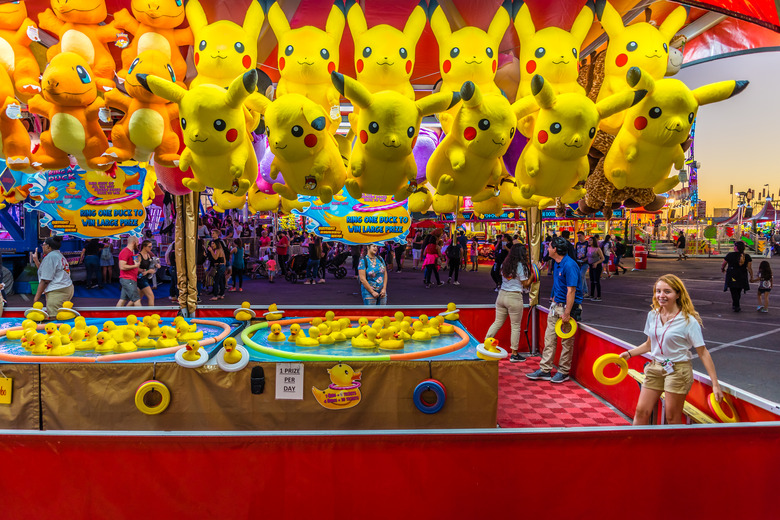If You Played Pokemon As A Kid, There Might Be An Entire Region Of Your Brain Dedicated To Remembering Who Squirtle Is
Do the words Lickitung and Jigglypuff mean anything to you? If you're scrunching up your face in confusion, it's probably because you're not too familiar with the Pokemon universe. But if you're picturing two cute little pink characters, you probably played Pokemon as a kid. And not only that – researchers have just unveiled that there's an entire region of your brain devoted to recognizing those adorable pocket monsters.
The team of researchers decided to take a peek into the brains of study participants who were self-proclaimed Pokemon masters. They'd played the game on their Game Boy as kids, and then dabbled in Pokemon as adults.
The scientists watched scans of the Pokemon trainers' brains as they showed them images of the 150 original characters, as well as photos of other common things, such as animals and cars. When the participants saw pictures of the characters, a region of their brain called the occipitotemporal sulcus was activated. But when a control group of people totally unfamiliar with Pokemon saw images of Pikachu and his buds, that region didn't activate in the same way.
The study suggests that when kids spent hours staring at the tiny black and white Pokemon on their Game Boy screens when they were younger, a tiny and highly specialized region of their brains formed to store that info.
Wait, So Does Pokemon Really ‘Rot My Brain’?
Wait, So Does Pokemon Really 'Rot My Brain'?
Parents upset by how much time their kid spends in front of screens often warn that the devices are brain-rotters. And while it's not a bad idea to pick up a book or head outside for a walk once in a while, this study doesn't show that Pokemon rotted any brains.
Instead, the findings can tell us more about the ways our brain works to process visuals, especially in those important childhood years when our brains are still developing. Rather than rotting the brain, the study actually shows how our brains are capable of creating specialized regions for all the information we take in as kids.
So, if you skipped Pokemon when you were little but loved playing Mario Kart, there could be a tiny corner of your brain devoted to recognizing Mario and company.
What Can We Do With This New Brain Info?
What Can We Do With This New Brain Info?
This isn't entirely new data. We already knew that the brain was capable of similar specialized regions. The most popular example is the grandmother cell, which is sometimes referred to as the Jennifer Aniston neuron. It's the hypothetical brain neuron that activates when we see or think of complex but specific things, such as the idea or image of a famous person. In 2005, researchers found that we possess certain brain cells that fire up when we hear the names or see images of people including Bill Clinton or Halle Berry.
But this study focused on what happened to brains that spent hours playing Pokemon as kids, and how it stayed with them even into adulthood. It also focused on the way that people saw those Pokemon (specifically, in black and white, and small enough that they didn't really extend into peripheral vision), suggesting that viewing images or people in different ways can change the way that our brains develop and store that data.
Continuing to gain a greater understanding of that brain development can help scientists and educators learn more about visual learning, and about how we can help kids have experiences that lead to even more areas of their brain being formed to store great new information.
Cite This Article
MLA
Dragani, Rachelle. "If You Played Pokemon As A Kid, There Might Be An Entire Region Of Your Brain Dedicated To Remembering Who Squirtle Is" sciencing.com, https://www.sciencing.com/if-you-played-pokemon-as-a-kid-there-might-be-an-entire-region-of-your-brain-dedicated-to-remembering-who-squirtle-is-13719086/. 14 May 2019.
APA
Dragani, Rachelle. (2019, May 14). If You Played Pokemon As A Kid, There Might Be An Entire Region Of Your Brain Dedicated To Remembering Who Squirtle Is. sciencing.com. Retrieved from https://www.sciencing.com/if-you-played-pokemon-as-a-kid-there-might-be-an-entire-region-of-your-brain-dedicated-to-remembering-who-squirtle-is-13719086/
Chicago
Dragani, Rachelle. If You Played Pokemon As A Kid, There Might Be An Entire Region Of Your Brain Dedicated To Remembering Who Squirtle Is last modified March 24, 2022. https://www.sciencing.com/if-you-played-pokemon-as-a-kid-there-might-be-an-entire-region-of-your-brain-dedicated-to-remembering-who-squirtle-is-13719086/
